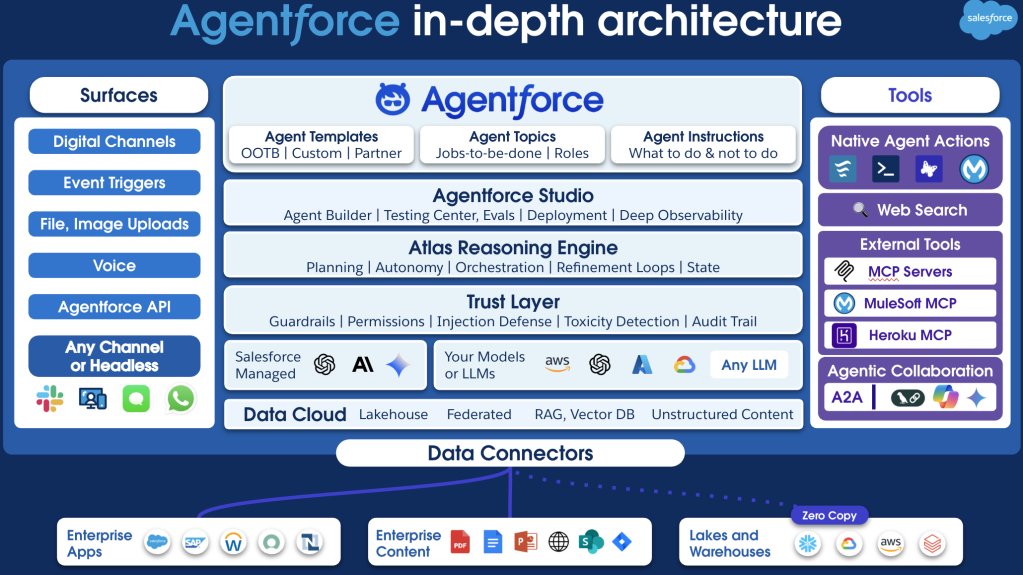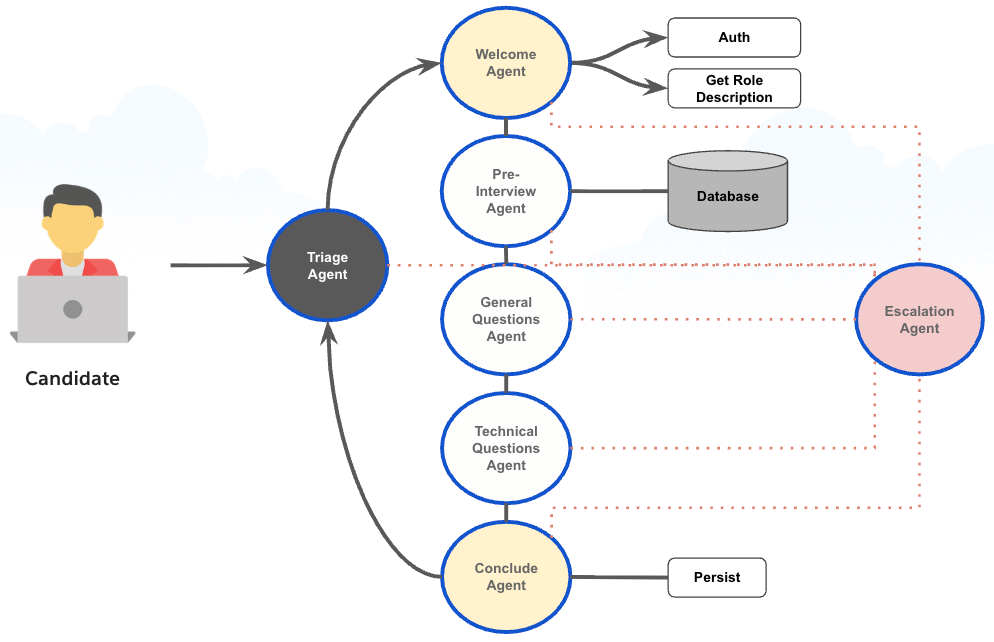
Enterprise AI deployments often stall due to architectural complexity, governance issues, and implementation challenges that internal teams can’t resolve on their own. Mukul Singh, a Forward Deployed Engineering (FDE) Director for Agentforce, guides customers in their Agentic Journey by helping them implement Salesforce AI solutions across their enterprise. Consequently, customers have reduced deployment timelines from six months to a few weeks and are scaling their team multifold.
Discover how FDEs overcome architectural integration complexity in mid-migration platforms and fragmented data lakes, resolve agent configuration anti-patterns that hinder production readiness, and use AI-augmented tools to compress information hunting from hours to minutes.
What is the Forward Deployment Engineering team’s mission building Agentforce implementations for enterprise customers?
Collaborating closely with the Product team, FDEs document every technical blocker and feed it directly into the roadmap rather than creating one-off custom fixes. Success in the role requires both deep technical skill and consultative strength — architecture, data integration, business understanding, and the ability to design agents that drive adoption.
Ultimately, our FDE team is dedicated to accelerating the adoption of Agentforce by leveraging deep technical expertise and swiftly unblocking customer implementations. We ensure 100% coverage and scale Agent Conversations to tens of thousands per week.
The FDE function exists because Agentic AI requires a radically different, deeply technical, customer-embedded model. FDEs are 100% focused on Agentforce, working in customer orgs daily to build, test, and deploy agents.
We personally write critical code, configure systems, and troubleshoot issues, while also teaching customers the skills they need to manage and optimize their own implementations. This approach ensures that we not only deliver solutions but also empower our customers to sustain and grow their use of Agentforce independently.
What architectural integration challenges emerge deploying Agentforce across enterprises with mid-migration platforms, fragmented data lakes, and millions of product SKUs?
The biggest technical blockers for Agentforce implementations often arise from customers working with immature platform architectures and complex enterprise data environments. Enterprise customers frequently face architectural decision paralysis at AI councils and enterprise architecture boards, where they must evaluate whether to adopt Agentforce across their ecosystem. Governance questions around security, compliance, and observability require detailed scorecards, which can slow down the decision-making process. In contrast, small and medium enterprise customers tend to be much faster and more nimble in their implementations.
Technical complexity also emerges in the fundamentals of agent configuration. Customers sometimes add excessive instructions, leading to deterministic behavior that hinders the LLM’s ability to reason effectively. The key distinction lies between deterministic and non-deterministic logic, which determines where to place business rules. Instructions should guide the agent’s thinking, not hard-code every decision path. Our team helps identify when logic should be extracted into explicit workflows, allowing the agent’s non-deterministic reasoning to handle variations more efficiently.
Data architecture decisions add another layer of complexity. Customers often debate whether to pipe data through APIs from external systems or leverage zero-copy approaches to bring data into Data Cloud. Each approach comes with its own set of performance and architectural trade-offs. These decisions require a deep understanding of existing infrastructure, legacy system constraints, and scalability requirements — knowledge that most organizations lack internally. Our team provides the expertise needed to navigate these challenges and ensure successful implementations.

What agent behavior and prompt engineering anti-patterns emerged deploying Agentforce across complex enterprise environments with varying data models?
The most fundamental anti-pattern in Agentforce implementations centers on instruction bloat, where customers add excessive guardrails, believing that more instructions will lead to better agent behavior. However, the reality is quite the opposite. When customers try to control agent behavior through detailed instructions, it often results in agents not responding correctly. This is because determinism through instructions is not the right approach. Best practices involve distinguishing between deterministic and non-deterministic elements and placing logic appropriately.
Testing and observability gaps further compound these configuration challenges. For example, one customer struggled for three to four months to determine if their agent was working as expected before FDE involvement. Through weekly and biweekly cadences, our team addressed all observability questions and shared knowledge of features in beta or pilot phases. Within three to four weeks, their numbers radically improved.. They expanded agent deployment across all webpages, rather than just one, and achieved autonomous resolution rates upwards of 60% .
What productivity bottlenecks did AI-augmented tools solve by diagnosing issues across thousands of Slack channels while compressing Apex development from days to minutes?
Salesforce FDEs are one of the most customer-embedded teams, interfacing daily with Sales, Services, Engineering, Partners, and Product Marketing to resolve issues quickly. The FDE organization is scaling rapidly, which reflects the high demand for Agentforce implementations.
Slackbot has transformed FDE productivity by reducing information hunting to immediate answers, achieving a 95% hit rate for finding correct information. When product issues arise — whether bugs affecting customers that morning or technical questions requiring investigation — Slackbot pulls the exact reference to relevant internal tickets, identifies the specific issue, and often provides the exact workaround. Research time that hours once took an hour, searching across multiple systems, now takes just five to ten minutes.
The tool’s effectiveness comes from surfacing information across thousands of Slack channels where product teams post updates, issues, and resolutions. This is particularly crucial when troubleshooting customer deployments under significant time pressure. The difference between spending an hour hunting for information and getting answers in minutes directly impacts deployment velocity.
Agentforce for Developers’ AI capability offers similar productivity gains for development work. Writing a proof-of-concept Apex class or Lightning Web Component previously required one to two days, including development and testing cycles. Now, with Agentforce for Developers, production-ready code is generated in minutes, compressing development timelines from days to minutes.
How does the FDE team at Salesforce ensure rapid and effective deployment of Agentforce, and what mechanisms are in place to feed customer feedback into product engineering?
A core principle of the FDE team is maintaining a high agility quotient, operating with urgency in rapidly changing customer environments. Customer obsession drives the team’s operating model, ensuring agent design aligns with measurable business outcomes. FDEs ensure rapid deployment by embedding engineers directly in customer orgs to remove architectural, data, and configuration blockers in real time. A standardized pod model and proven design patterns eliminate common anti-patterns, enabling repeatable scale across brands and business units.
Hyper-focused daily and weekly meetings cover top customer challenges, while weekly sessions address the broader program, bringing customer feedback, solutions, and workarounds directly to product leadership.
Automated multi-turn testing framework, helps validate complex conversations that single utterance testing can’t handle. This helps to identify issues / gaps much faster helping the engineering team to rectify it before broader customers get impacted. Additionally, advanced monitoring tools provide real-time insights into system performance and user interactions, helping to quickly address technical challenges.
Learn more
- Stay connected — join our Talent Community!
- Check out our Technology and Product teams to learn how you can get involved.






